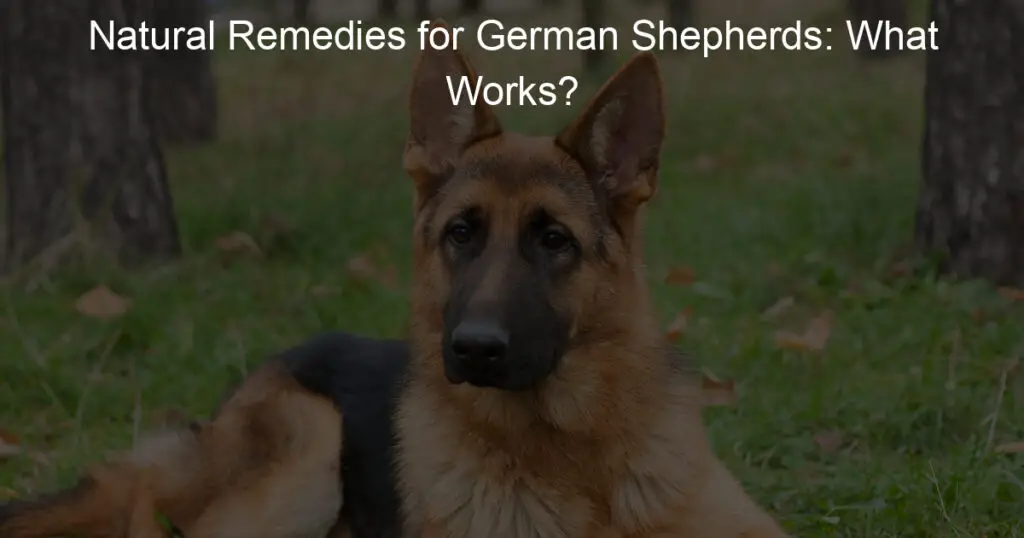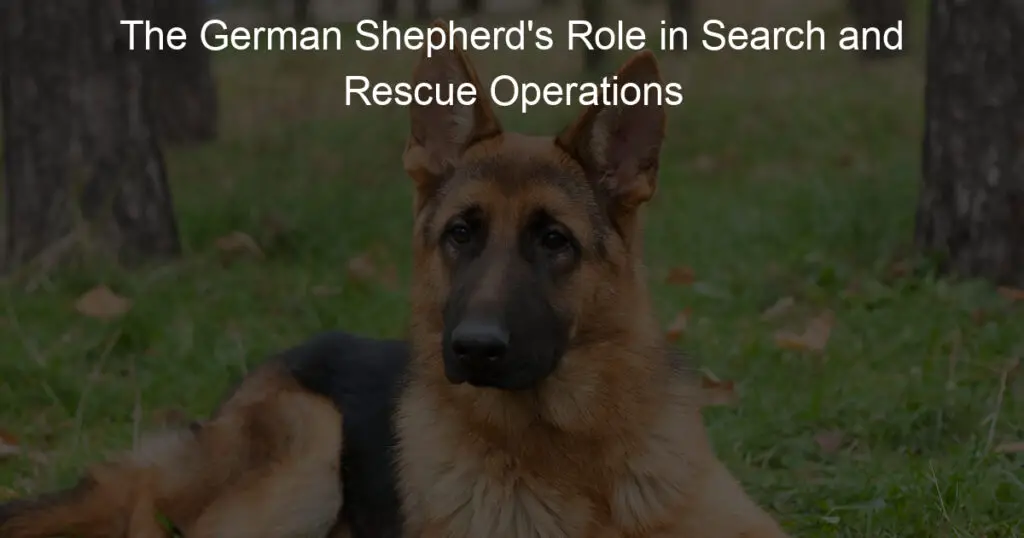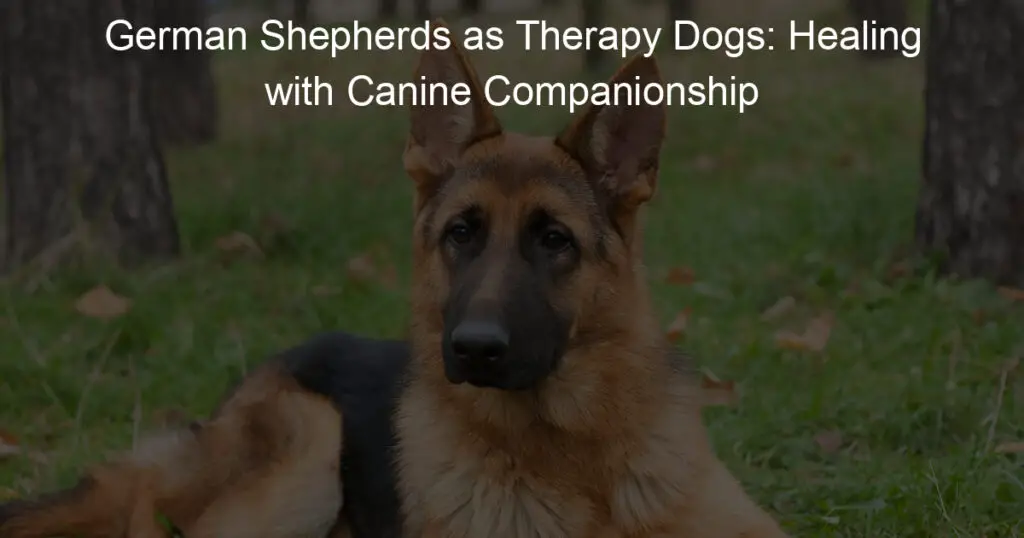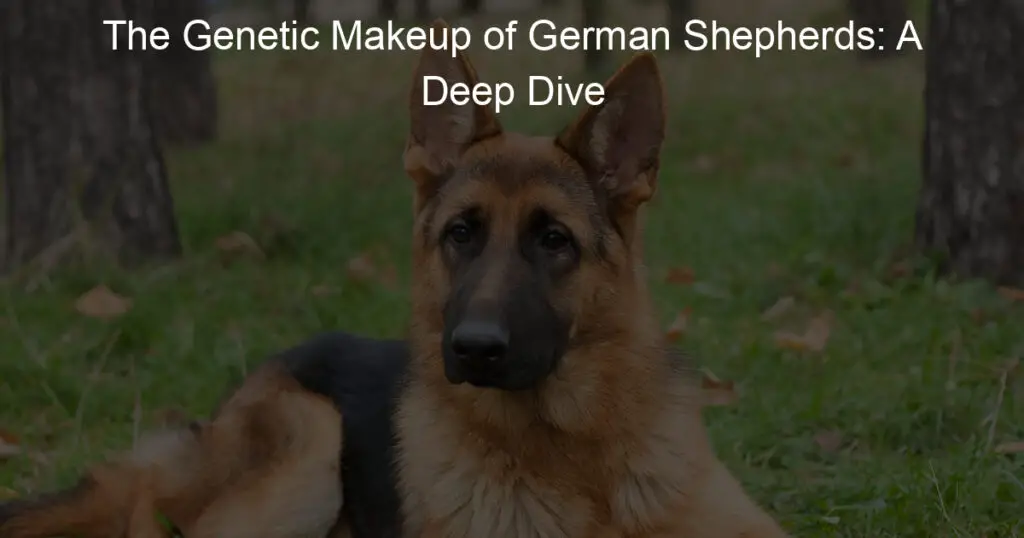When it comes to German Shepherds, many people are curious about the number of puppies they can have in a single litter.
German Shepherds are known for their intelligence, loyalty, and versatility, making them a popular choice for households and working roles alike.
Understanding the factors that influence litter size can help prospective owners prepare for the arrival of a new litter.
Several factors can determine how many puppies can a German Shepherd have, including genetics, age, and overall health of the mother.
Further, the breeding process and the diet and nutrition of the pregnant dog play a crucial role in the number of puppies born.
Adequate preparations for whelping and proper post-birth care are also essential to ensure the health of both the mother and her puppies.
Key Takeaways
- German Shepherd litter size depends on genetics, age, and health of the mother
- Proper diet and nutrition during pregnancy are crucial for a healthy litter
- Adequate preparations for whelping and post-birth care are essential for the well-being of the puppies and the mother
Understanding A German Shepherd’s Life Stages
As a German Shepherd owner, it’s essential for me to understand the various life stages my dog will go through.
This knowledge helps me to provide the right care and anticipate changes in behavior and needs.
In the first life stage, the newborn stage, puppies are born after a gestation period lasting about 65 days. At birth, they are blind, deaf, and completely dependent on their mother for nourishment.
During the first two weeks, their main activities are eating and sleeping.
After two weeks, they enter the next life stage, puppyhood. Their eyes and ears open, and they start exploring their surroundings and interacting with their littermates.
This period, lasting until they are about eight weeks old, is crucial for their socialization and learning.
I make sure to expose my puppy to various experiences and stimuli during this stage to ensure proper development.
The adolescent phase follows puppyhood, usually beginning around six months and extending up to two years. My German Shepherd experiences a growth spurt, along with hormonal changes that influence their behavior.
During this stage, they might act out, show stubbornness, and struggle with obedience. It’s crucial that I maintain a consistent and comprehensive training program to guide them through this period.
Finally, my German Shepherd reaches adulthood, which lasts from about two years until they are six or seven years old.
During this stage, my dog achieves physical maturity and exhibits the breed’s famous intelligence, loyalty, and protectiveness.
This period is when their training and socialization efforts pay off, and they become a dependable and well-behaved companion.
The mature stage, beginning around seven years of age, is when my German Shepherd enters the senior phase of their life.
Their energy levels decrease, and they might develop age-related health issues, such as joint disorders or vision problems.
I make adjustments to their diet and exercise routines to accommodate these changes and ensure their comfort and happiness.
Understanding these life stages allows me to be the best caretaker I can be for my German Shepherd, ensuring they receive the love, care, and attention they need at each stage of their life.
How Many Puppies Can A German Shepherd Have
Genetics and Traits
In my experience, one of the main factors influencing litter size in German Shepherds is genetics. Both the male and female dog’s genes play a crucial role in determining the number of puppies born.
Certain traits and qualities passed down from the parents are relevant here, such as the size and build of the dog, as well as breed-specific traits like coat color or head shape.
Health Condition
Another significant factor impacting litter size in German Shepherds is the health condition of the female dog. A healthy and well-nourished German Shepherd is more likely to have an average or slightly larger-than-average litter size.
On the other hand, if a female dog is suffering from health issues or is underweight, it may have a smaller litter size or face complications during birth.
Age of the Female Dog
The age of the female German Shepherd also plays a vital role in determining litter size. As a general rule, younger dogs tend to have smaller litter, and as they mature, their litter sizes increase.
Nevertheless, as the female dog ages, the litter size might start to decrease again. This is especially true when the dog is approaching the end of her reproductive years, usually around 7 to 8 years old.
The Role of the Male Dog
Finally, the role of the male German Shepherd cannot be overlooked when discussing litter size. Male dogs with strong and healthy genes are more likely to contribute to a larger litter size.
Also, a proven stud with a history of siring large litter might also increase the chances of a female dog having a larger litter.
A male dog’s age and health condition are also important considerations, as older or less healthy males could potentially contribute to a smaller litter size.
The Pregnancy And Breeding Process
Gestation Period and Birth
When it comes to the breeding process of a German Shepherd, their pregnancy, also known as gestation, lasts approximately 63 days.
It’s during this time that the puppies develop in the mother’s womb. Some factors may lead to slight variations in the length of pregnancy, such as the size of the litter, the mother’s health, and her age.
Most German Shepherds will give birth to 5-10 puppies in a litter. However, some litters may be smaller, with as few as one or two puppies, or larger, with up to 14 or more puppies.
The number of puppies in a litter mainly depends on genetics and the health of the breeding pair.
Artificial Insemination
In some cases, breeders may opt for artificial insemination to improve the chances of a successful breeding process.
This method allows breeders greater control over the selection of the sire, improving genetic diversity and reducing the spread of hereditary conditions.
Additionally, artificial insemination can be valuable in situations where the breeding pair may have difficulty mating naturally.
There are two main forms of artificial insemination: fresh-chilled semen and frozen semen. Fresh-chilled semen is collected from the sire and then shipped to the breeder to be inseminated into the dam.
On the other hand, frozen semen has a longer shelf life than fresh-chilled and can be stored for later use.
Nesting Behavior
Towards the end of the gestation period, the pregnant German Shepherd will begin to display nesting behavior. This is when she will seek out a comfortable and safe place to give birth and care for her puppies.
As a responsible breeder or owner, it’s essential to provide the expecting mother with adequate space and materials like blankets to create her nest.
During this time, the mother may become restless and anxious as she approaches her due date, and it’s crucial to monitor her closely for signs of labor.
Ensuring the birth environment remains calm and quiet will help reduce the stress on the pregnant German Shepherd.
Examining The Importance Of Diet And Nutrition
High-Quality Diet
In my experience, a well-balanced, high-quality diet is essential for the overall health of a German Shepherd. It plays a significant role in the number of puppies they can have and the health of the puppies as well.
Providing a German Shepherd with the necessary nutrients helps them maintain their strength and stamina, which is crucial during pregnancy.
I’ve learned that incorporating high-quality protein sources, such as chicken, beef, or fish, is vital for their muscle development and growth.
Complex carbohydrates like brown rice, sweet potatoes, and vegetables are important for providing energy and maintaining weight.
Including omega-3 and omega-6 fatty acids in the diet also promotes a healthy coat and supports the immune system.
Supplements And Your German Shepherd
In addition to a high-quality diet, I believe that supplements can also play a crucial role in a German Shepherd’s health and their ability to produce a healthy litter.
Supplements, such as glucosamine and chondroitin, help support joint health, which could be particularly beneficial for this breed, as they are prone to hip dysplasia.
It’s important for me to note that any supplement regimen should be tailored to the individual dog’s needs and always be discussed with a veterinarian before implementing any supplement.
However, some common supplements that I have seen improve overall health in German Shepherds include:
- Folic acid: Supports reproductive health and prevents certain birth defects in puppies.
- Calcium: Essential for strong bones, teeth, and milk production in nursing mothers.
- Vitamin E: An antioxidant that helps maintain a healthy immune system and supports fertility.
- Fish oil: Provides essential fatty acids, which improve skin and coat health.
In conclusion, maintaining a high-quality diet and considering appropriate supplements for your German Shepherd can have a significant impact on their overall health.
This can, in turn, have a positive effect on the number of puppies they can have and the puppies’ health.
Making Adequate Preparations For Whelping
Setting Up The Whelping Box
When preparing for whelping, it’s essential to have a safe and comfortable environment for the mother and her puppies.
I recommend setting up a whelping box, which is a designated area specifically designed for the birthing process.
The box should be spacious enough for the mother to lie down comfortably while still having room for her puppies.
Here are some guidelines for setting up the whelping box:
- Materials: Use a sturdy material such as wood or plastic to create the box. Make sure that there are no sharp edges or protrusions that could harm the mother or puppies.
- Size: The box should be large enough to allow the mother to stretch out comfortably while giving her puppies plenty of space to move and nurse.
- Flooring: Line the bottom of the box with towels or a soft blanket to provide a warm and comfortable surface.
- Borders: The box should have walls high enough to prevent the puppies from climbing out, but low enough for the mother to easily step over.
- Location: Place the whelping box in a quiet, low-traffic area of your home where the temperature is stable and comfortable.
Taking Care Of The Puppies Body Temperature
As the puppies are born, it’s important to ensure they maintain an appropriate body temperature. Their body temperature will be lower than an adult dog’s, and they won’t be able to regulate it on their own for the first couple of weeks.
To help with this, make sure to do the following:
- Warmth: Keep the whelping box in a room with a consistent temperature between 75-80°F (24-27°C). This will provide an ideal environment for the puppies.
- Towels: Make sure there are plenty of clean, dry towels available to help dry off the puppies after they’re born. Wet puppies can quickly lose body heat, so it’s essential to dry them promptly.
- Heating Pad: If necessary, place a heating pad or heat lamp near the whelping box to help maintain a consistent temperature. Make sure there is still a cooler area in the box for the puppies to move to if they get too warm.
- Monitor: Keep an eye on the puppies to ensure they’re staying warm and cozy. If they seem cold, increase the heat in the room. If they are panting or seem too warm, provide a cooler area for them to move to.
Post-Birth Care And Socialization
Nursing and Health
In the first few weeks, I focus on nursing. During this time, it’s crucial for the puppies to receive adequate nutrition from their mother’s milk, as it contains essential antibodies that help build their immune systems.
I verify that each puppy is nursing regularly, gaining weight, and not displaying any signs of illness.
Around 3 to 4 weeks of age, I begin the weaning process. This involves gradually introducing solid food mixed with water or milk replacer.
By 6 to 8 weeks old, the puppies are usually eating solid food three times a day.
Keeping up with vaccinations is also my responsibility. Puppies should receive their first vaccinations between 6 and 8 weeks of age, followed by additional vaccinations at 12 and 16 weeks.
Consult with a veterinarian for specific vaccination schedules and the types of vaccines recommended for German Shepherd puppies.
The Socialization Period
Socialization is a critical aspect of raising well-adjusted German Shepherd puppies. I start socializing them at a young age, typically between 4 and 14 weeks.
During this period, I introduce them to a variety of people, animals, environments, sounds, smells, and experiences. This helps ensure they’ll be confident, capable, and adaptable as they grow older.
Positive experiences at this stage are crucial, so it’s important to expose them to new situations gradually and pair them with rewards like praise, treats, or playtime.
In addition to exposing the puppies to new stimuli, I also worked on basic obedience training during the socialization period.
Teaching them simple commands like “sit,” “stay,” or “come” can establish a foundation for future training and strengthen the bond between us.
Socialization doesn’t end after the initial 14-week period; it’s an ongoing process as the German Shepherd puppies develop into well-rounded adults.
Remember to maintain a consistent routine and continue introducing your puppies to new experiences as they mature.
Characteristics Of German Shepherds
As a knowledgeable dog enthusiast, I can confidently say that German Shepherds are known for their remarkable loyalty and intelligence.
These characteristics make them one of the most beloved and popular breeds in the world.
In this section, I will be sharing some more distinctive traits of this breed to provide further insight into their personalities.
Possessing natural abilities for learning and following commands, German Shepherds excel in various fields such as police work, search and rescue operations, and even as assistance dogs.
Their sharp instincts and skill in interpreting human gestures often lead to them forging strong bonds with their caregivers.
It is important to note that German Shepherds are a highly active and energetic breed. They thrive when provided with consistent mental and physical stimulation, such as daily walks, play sessions, and training exercises.
Neglecting this need for engagement could result in the development of destructive behaviors as an outlet for their pent-up energy.
Socialization and training play a crucial role in shaping the behavior of German Shepherds.
A well-socialized puppy will grow up to be a friendly, confident, and well-adjusted adult who can handle various situations.
Likewise, early and consistent training will reinforce desirable habits and discourage unwanted behaviors.
One particular characteristic that stands out in this breed is their protective nature.
As a German Shepherd owner, I have observed that they are always vigilant and alert, ready to protect their loved ones from potential threats.
This trait makes them well-suited for roles as family guardians and working dogs.
In conclusion, German Shepherds are a versatile, intelligent, and loyal breed, possessing a remarkable set of qualities that make them exceptional companions and workers.
By understanding and catering to their unique needs, we can help them lead happy, balanced, and fulfilling lives.
Frequently Asked Questions
What is the average litter size for German Shepherds?
The average litter size for German Shepherds is between 5 and 10 puppies, with 8 being the most common number.
However, some litters may have as few as two puppies or as many as twelve. Factors such as genetics, the dog’s age, and the dog’s overall health can influence the size of a litter.
Are there factors influencing the number of puppies a German Shepherd can have?
Yes, several factors can influence the number of puppies a German Shepherd may have in a litter. These factors include the mother’s age, her health, genetics, and nutritional intake during pregnancy.
Additionally, smaller litter sizes may be observed in first-time mothers, while larger litter sizes can be expected in later pregnancies.
How do German Shepherd litters compare to other large dog breeds?
German Shepherd litter sizes are generally comparable to other large dog breeds. However, some large breeds may have smaller litter sizes, while others can have larger ones.
For example, Labrador Retrievers typically have litters of 6 to 8 puppies, while Great Danes can have litters of up to 15 puppies.
At what frequency can a German Shepherd give birth?
A German Shepherd can safely give birth every 12 to 18 months. It’s essential to provide ample recovery time between pregnancies to ensure the health of both the mother and her future puppies.
Too frequent breeding can lead to complications and health issues for both the mother and her offspring.
Do German Shepherd litter sizes change with each pregnancy?
German Shepherd litter sizes can indeed change with each pregnancy. Litter sizes often increase after a dog’s first pregnancy as her body becomes more adept at carrying and nurturing multiple puppies.
Regardless, other factors, such as age or health, can also influence changes in litter size.
Is there a specific breeding age for optimal German Shepherd litter sizes?
A healthy, optimal breeding age for German Shepherds is typically between 2 and 4 years old. During this time, the dog is physically mature enough to handle pregnancy and labor without unnecessary complications.
Breeding a German Shepherd too young or too old may result in smaller litter sizes and potential health risks for the mother and her puppies.















